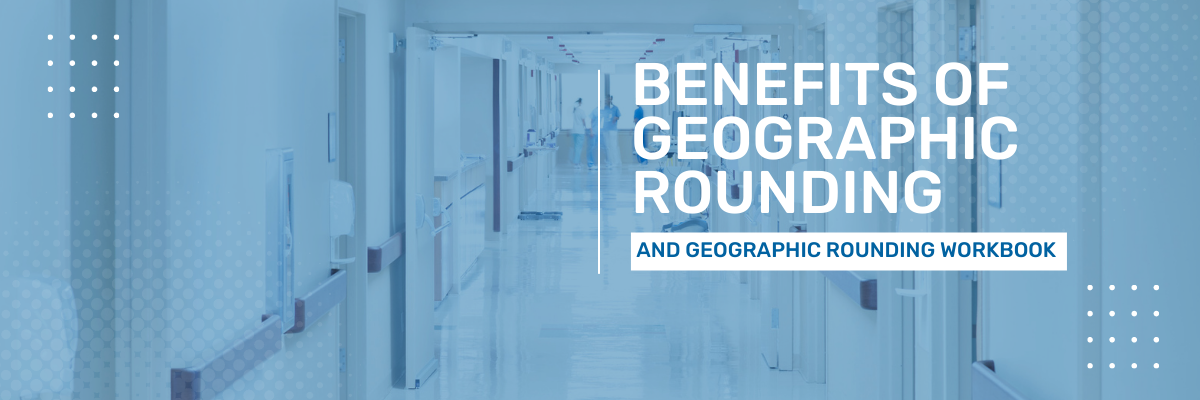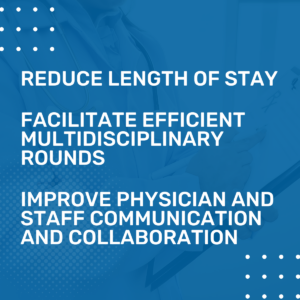
Among developed nations, the U.S. has one of the lowest numbers of hospital beds on a per capita basis—and the number has steadily declined for more than 40 years. The cause is a combination of increased financial and regulatory pressures paired with trends in hospital and healthcare system consolidation.
Yet there are important reasons to implement and sustain a geographic rounding program that go well beyond responding to bed and staffing shortages, or unexpected surges in volume.
For hospital leaders who are interested in planning and implementing a sustainable geographic rounding program at their facility, our Vice President of Clinical Operations Mark Canada has written a comprehensive guide.
One of the first steps in planning a sustainable program is for clinical teams to get clear about the goals and expected benefits. Hospital leaders should understand that geographic rounding won’t be a
cure-all for every problem that ails the hospital. Rather, it is one tool among many that a hospital medicine program can use to advance three main goals:
- Reduce inpatient length of stay
- Facilitate efficient multidisciplinary rounds
- Improve physician and staff communication and collaboration
Geographic rounding will help support all these goals—with some qualifications.
1. Reduce Length of Stay
Both the on-the-ground experience of care teams and the academic literature support the fact that geographic rounding can have a meaningful impact on length of stay.
One randomized control study of hospital admissions over a six-month period found that those who were placed into a geographic rounding unit had both reduced length of stay (approximately 12 hours) and lower total charges. Another prospective cohort study found that patients admitted to geographic rounding units had a length of stay approximately 17 hours lower than the non-geographic rounding patients at the same facility (3.64 days vs. 4.35 days, respectively).
But why does geographic rounding reduce length of stay? Likely because it facilitates multidisciplinary rounding with closer communication and improved teamwork.
2. Facilitate Efficient Multidisciplinary Rounds
Multidisciplinary rounds, sometimes referred to as interdisciplinary rounds or transition of care plan (TCP) rounds, bring together the stakeholders involved in patient care to discuss, coordinate, and make joint decisions about each patient’s progression of care.
The benefits of multidisciplinary rounds are well-known:
- Patients receive the right level of care faster
- Better efficiency (care teams can see more patients)
- Improved quality outcomes
- Reduced readmissions
3. Improve Physician and Staff Communication and Collaboration
By helping to facilitate multidisciplinary rounds, geographic rounding can improve communication between physicians and staff, as well as enhance nursing perception of teamwork. This perception sets the stage for many of the positive outcomes listed above, as well as better patient engagement.
By allowing more time on specific units, communication between the team of physicians, APPs, nursing, therapies, laboratory, radiology, social workers, and case managers improves. This facilitates actions that both improve quality of care, and may also reduce length-of-stay:
- Implementation and compliance with clinical care pathways, including data gathering for fallouts and opportunities for improvement
- Follow-up on laboratory studies such as culture and sensitivity testing for appropriate antibiotic choices
- Assurance of progression of care to post-acute facilities in a timely manner
Trouble launching or sustaining a geographic rounding program?
We’ve created the Geographic Rounding Workbook, our guide for planning, implementing, and sustaining a successful program. You can download the guide here, or reach out to us directly through our Contact page.


